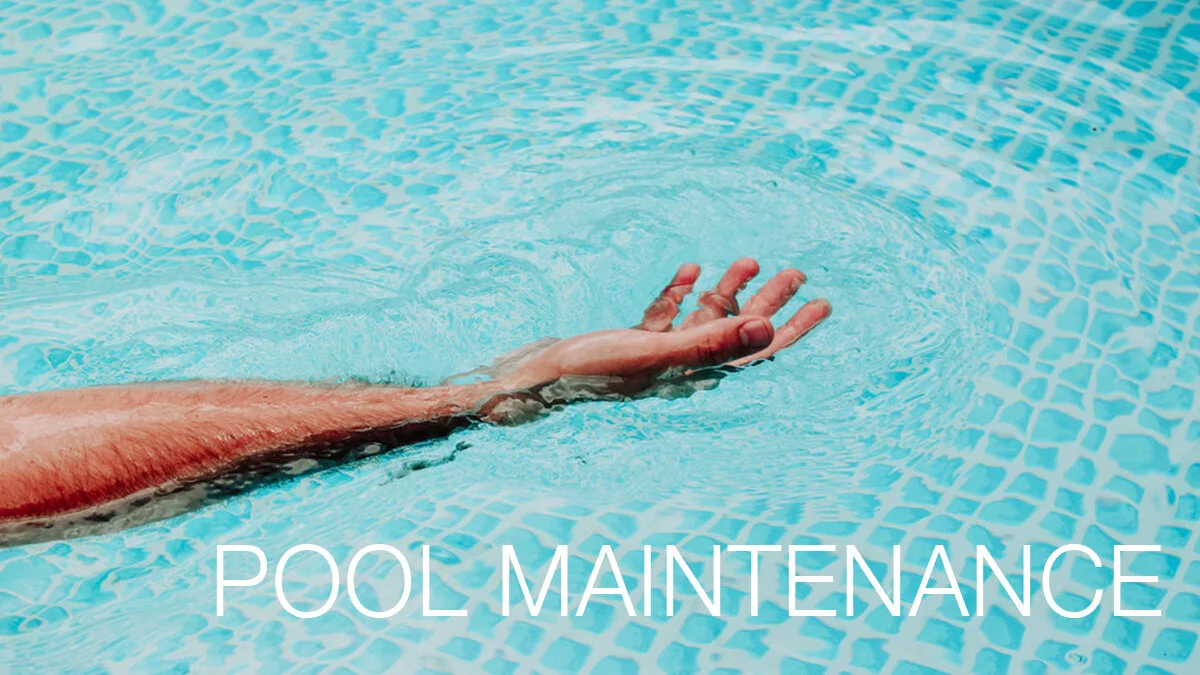Pool Maintenance
/Maintenance of your pool & spa equipment is important all year round, whether it’s a busy summer, after a party, a weather event such as a storm or just some winter TLC.
Here is a list of the things to check so your pool water is balanced, your equipment is working at its best, keeping your costs down and is ready to go when you are!
Cleaning Equipment
Check your leaf rake (scoop) nets for splits and tears; these can be replaced separately either in-store or at home with just a screwdriver (and a lot of patience). Cracks in the frame of leaf rakes and brushes happen when the residual chlorinated water remains on them, as well as damage from the sun’s UV rays, making them brittle.
Pumps
Check for any signs of leakage, most commonly found underneath where the 'wet end' meets the motor. There is a mechanical seal that separates the two, which can begin to leak and become noisy with age. If you find a leak or the seal needs to be replaced, contact us to arrange a repair.
Also, check the pump basket for cracks, as this can allow fine debris into the impeller, restricting or even stopping the flow of water. Lubricating the o’ring on the pump lid and ensuring there’s no air entering the system.
In times of heavy rain and storms, clear debris away from the pool pump and check to make sure the drainage around the pump is good so that the pump won't get flooded in a heavy deluge.
Filters
Those with glass media are the easiest filters to clean as they don't require any special maintenance, a quick backwash 30 seconds - 1 minute, and a short rinse, ~30 seconds, and you'll be good to go again.
Older style cartridge filters can be cleaned and degreased, media filters such as sand and zelbrite, benefit greatly from degreasing as well as not everything is expelled with a backwash. Cartridge and DE filters require a good hose out and should also be degreased to maintain their efficiency and make them last longer.
Check the Multiport Valve for any leaks. The most common place to find them is water coming up through the handle area, Check around the collar where it joins to the tank for drips while running.
The tank of the filter can fatigue over time from being under constant high pressure; be sure to run your eye and hands over the whole tank for leaks and stress cracks. Check the pressure gauge for correct pressure readings e.g. when the pump is off, it should be at 0 and when on, it is operating in the normal range. If it’s not working, we suggest replacing it.
Chlorinators
A good clean of the cell is important, even if it is 'self-cleaning'. This will remove the excess Calcium buildup that can attach itself to the sensor and give you false readings or reduce the output. Simply mix a very dilute acid:water mix of 1 part acid to 10 parts water in a bucket and put the cell into the mix, ensuring that the acid/water solution only touches the plates and not over the cap onto the leads.
*Always add acid to water, never water to acid, as this can splash the acid onto you!!
Check the power connections on the cap to ensure there are no exposed wires and they aren't stripped or damaged.
Pool Cleaners
There are a lot of wearing parts on suction cleaners, including skirts, soles, swivels, floats and hoses on suction cleaners, to rollers and baskets on robotic cleaners. Usually, a visual inspection of the cleaner will easily show parts in need of repair, though if they just aren’t working like they used to, you can bring the whole unit to us, and we’ll give it the professional once-over.
Robotic Cleaners need their filters cleaned and checked for damage or tears. Checking the power cables for exposed wiring or damage by running your hands along the entire length of the cord to feel for any potential issues. Look at the tracks/wheels for wear and tear as well as watching it move around the pool to notice any cleaning issues.
Water Balance
A home test kit will check your chlorine, pH, and alkalinity levels. Test strips also include cyanuric acid (stabiliser). Ensure they are in the ideal range and balance where required.
Alternatively, by bringing a water sample into our shop, we'll be able to test for all the balances that can affect your water quality and ensure that you have the perfect balance to keep your water clear!
Pool Safety
The swimming pool gate must open outward from the pool and have self-closing hinges and a self-latch on the 1st swing from all distances. Check your pool fence is solid, secure and in good working order.
Don't forget to check around the pool fence for objects that could be used to climb the fence; these should be removed from the area with pool aids and toys securely stored away and out of view. Ensure your CPR sign is clearly visible from the pool, easily legible and current.
*IMPORTANT
This is only a guide. If you are unfamiliar with your equipment and/or its operation, please contact us. We can either help you learn more or come and check your equipment for you. More damage can be done by removing or uninstalling any parts of the filtration system and void any warranties you may have.



